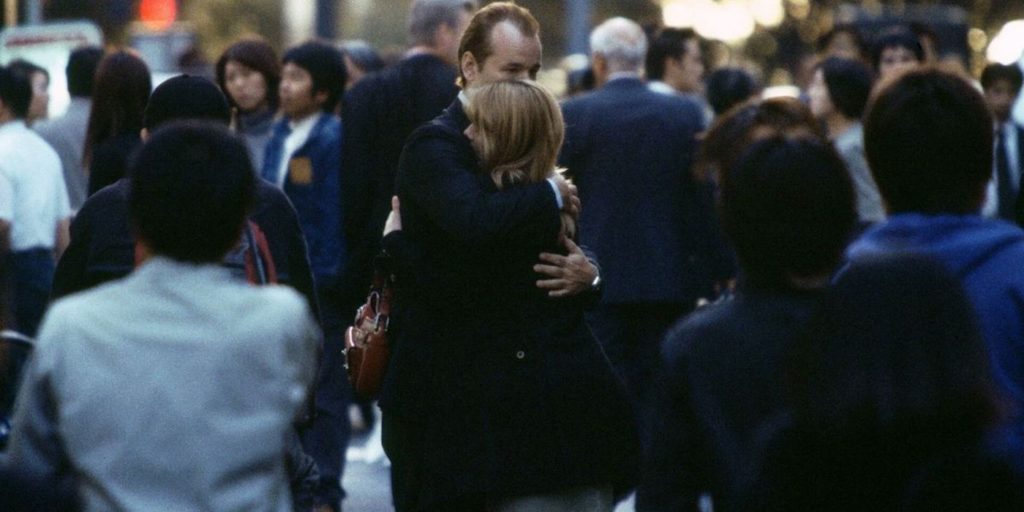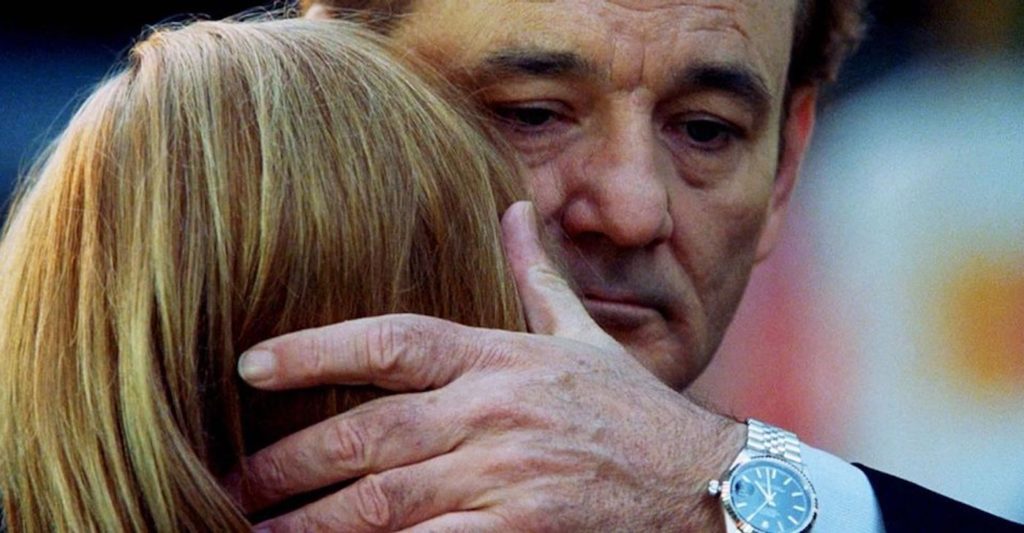Rarely does an independent movie persuade masses of viewers to act as web detectives to decipher what happens in the last act. Yes, this type of behaviour is quite typical for science fiction, horror, and other genre movies because those genres tend to draw obsessive and investigative types. But a character-driven movie with little to no plot? Someone has to be deeply affected by the movie for them to start looking for the solutions. Such is the case with Sofia Coppola’s 2003 Oscar-winning second film, Lost in Translation, which has prompted many web users to don their audio engineer hats in order to decipher what was said in a muffled whisper between the two main characters.
We must first establish some context before moving on. The main focus of Lost in Translation is the relationship between two Tokyo strangers. One is Bill Murray’s character Bob Harris, an ageing actor wanting to make some quick money by appearing in some advertising for a Japanese whiskey. Contrary to today, when it seems like all we see is celebrity endorsement of items in ads (Matt Damon and cryptocurrency? ), at the time it was considered a faux pas. The second one is Charlotte (Scarlett Johansson), a recent college graduate who is really unsure of what she wants to do with her life. She has accompanied her husband, a photographer named Giovanni Ribisi, who she finds distant, to Tokyo. As two people who are lost and alone, Bob and Charlotte connect and develop a relationship that teeters on the edge of friendship and affection.

The whisper is undoubtedly the factor that has generated so much discussion and inquiry. Bill Murray whispered something in Scarlett Johansson’s ear. Only Murray, Johansson, and Sofia Coppola, three persons in the entire globe, are aware of the precise words that were spoken at that precise moment. All three of them have never disclosed what was said, and they don’t intend to, in the nearly 20 years since the movie’s premiere. In her essay for the movie’s fifteenth anniversary, Little White Lies, Coppola remarked the following:
“That whispering Scarlett hears from Bill was never meant to be anything. We never did, and I was going to decide what to say and add it in afterwards. It was private to them. Simply admitting that week has significance for both of them will have an impact on how they conduct their subsequent lives. People frequently ask me what was stated. I’ll leave it at that because Bill’s response, “It’s between lovers,” is one I always like.
People have even gotten to the point of altering the audio levels of the scenario to try and figure it out because they are not providing a clear explanation. Even this hasn’t offered a clear solution. According to one video, he allegedly states, “I have to be leaving, but I won’t let that get in the way of us. Okay?” According to a different video, Murray’s whisper was uncharacteristic because he adds, “I love you is the best thing I can think of. He will eventually have to tell her. Some have hypothesised that he is telling her to divorce her husband. There is yet no conclusive solution, thus it is obvious that people’s audio talents are not as adept as they believe they are.
Here’s the deal, people. It doesn’t really matter what was really said. In cinema, ambiguity may be a strong technique. Many movie lovers find it to be really uncomfortable. When a scene in a movie poses a question rather than providing an answer, it compels the audience to dig within themselves for the solution. As a result, they might not like what they discover about themselves. Each viewer of Lost in Translation is forced to consider their own experiences with love, companionship, age, and hope in order to understand what the film’s concluding scene means to them. Even if they watched the same movie, the person sitting next to you might have completely different life experiences and interpretations of what happened in the movie, leading them to think he whispers something to her that you had never even thought of. It’s more crucial to understand Bob and Charlotte’s feelings in that situation than it is to understand what was said.
A superb work of art will often allow you to leave your stamp on it in these ways. Even this brief film clip, which only lasted a few seconds, sparked a discussion about Lost in Translation that has lasted for almost twenty years. How many movies have you seen since the debut of Coppola’s movie that you immediately forgot about? The unknown is what keeps us coming back to connect with great work, therefore it needs to leave a little room for mystery. Why would you ever need to see a movie again if you watch it the first time and comprehend everything about it? What is yet unknown?
I have a notion about what Bill Murray whispers to Scarlett Johansson in Lost in Translation. I believe he adds, “I want you to know that people, including me, love you, and with whatever you do with your life, you are going to be okay.” Am I correct? No, in actuality, but I am if that’s how I interpret the tale Sofia Coppola tells. Because in art, what is genuine to you is the truth, whatever you think he says to her is equally true. The beauty comes from that.

